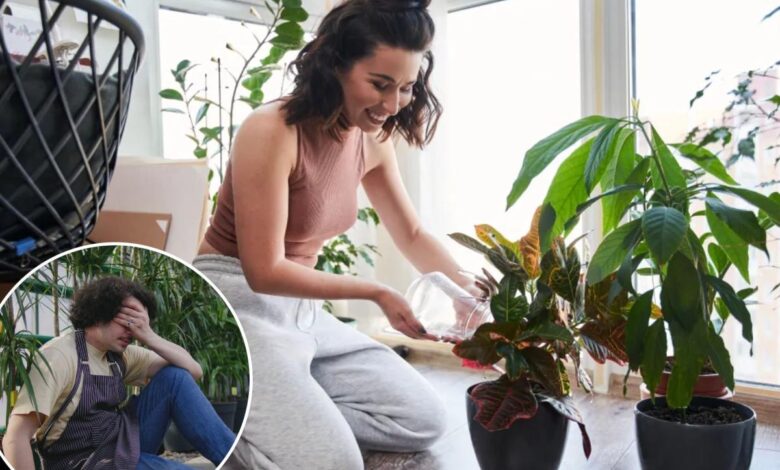This is the best amount of indoor plants to have for well-being


Your indoor jungle might be leafing you frazzled.
Houseplants have long been celebrated for their wide-ranging health perks, from lifting mood and easing fatigue to boosting pain tolerance and even helping the body recover faster.
But a new study from Stanford University suggests that too much greenery can backfire, turning what should be a calming oasis into a source of stress.
The findings shine a new light on a practice that dates back millennia. Five thousand years ago, Ancient Egyptians and Sumerians were already decorating their homes with potted ferns and palms.
Fast-forward to today and the houseplant craze is booming, fueled in large part by Millennials and Gen Z.
Surveys suggest that two-thirds of American households now sport at least one indoor plant, and one in three people under 40 proudly call themselves a “plant parent.”
Curious about the perfect “dose” of indoor nature, Stanford researchers developed the Nature View Potential tool.
The software measures how much greenery you actually see inside a room. Imagine rays shooting from your eyes, hitting every leaf, wood panel, and window view.
“The tool is calculating how many of those rays that are coming from your eyes are seeing natural elements,” Eva Bianchi, the study’s lead author and creator of the tool, said in a press release.
Using the tool alongside 3D modeling, the team created 11 digital conference rooms with varying amounts of indoor greenery. They enrolled 412 volunteers and randomly assigned them to the rooms.
The participants were instructed to treat the room as their new workplace and complete a series of professional development tasks. Before starting, they filled out a questionnaire measuring different aspects of their well-being.
Then, the researchers quietly introduced stressors to see if the greenery helped ease tension. The tasks included solving difficult anagrams and counting down from 1,022 to zero in increments of 13.
To ratchet up the pressure, Bianchi told participants they had scored below average and wouldn’t be paid before they again filled out the wellness questionnaire. Fortunately, all participants were paid in the end.
The study found that the sweet spot for indoor greenery was about 20%, which gave participants the biggest boost in perceived restoration and sense of belonging.
In practical terms, that’s like glancing around a room and spotting plants about one-fifth of the time. In a 13-square-meter space, that translated to 17 plants plus a window view of tree canopies, Bianchi told Newsweek.
“Any nature helps, but if you really want to see an improvement, you have to get up to around that value,” said Sarah Billington, the study’s senior author.
But in a room stuffed with greenery — including hanging plants, a living wall and wooden ceiling — the participants’ stress levels increased.
“I wasn’t expecting this at all,” said Bianchi. “Around 60% total greenery and wood had the highest stress increase, which was contradictory to prior work.”
Researchers suspect that too much nature can overwhelm people indoors. Some participants even wrote that the room had “too many plants” and was “probably a nightmare to try to get anything done.”
The study also found that the key wasn’t just plants — it was feeling connected to them. Those who felt in tune with the greenery reaped more mental and physical benefits, while others saw little effects.
“You don’t just put a bunch of nature inside the space,” said Bianchi. “You make sure that the nature that you’re putting inside the space will successfully make the occupants feel connected to nature.”
Looking ahead, the researchers hope that the Nature View Potential tool can now help designers fine-tune indoor greenery so every room hits that sweet spot of comfort and calm.
The findings come as indoor plants are increasingly being used to boost health and well-being in a variety of settings.
In offices, studies have found that indoor plants can boost productivity by up to 15%, along with reducing stress, tension and feelings of depression.
In classrooms, students surrounded by plants tend to have concentration, focus and higher test scores.
Meanwhile, in hospitals, patients recover faster from surgery, take fewer painkillers and are discharged sooner when their rooms include greenery.
Even in assisted living facilities, incorporating plants into daily life has been shown to lift spirits and create a calmer, more positive environment.
This Article was copied from nypost .com, visit to read more
NOTE: THIS SITE DOES NOT BELONG TO FACEBOOK





